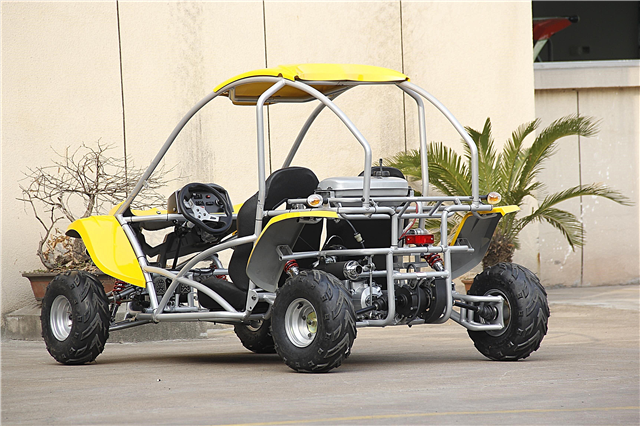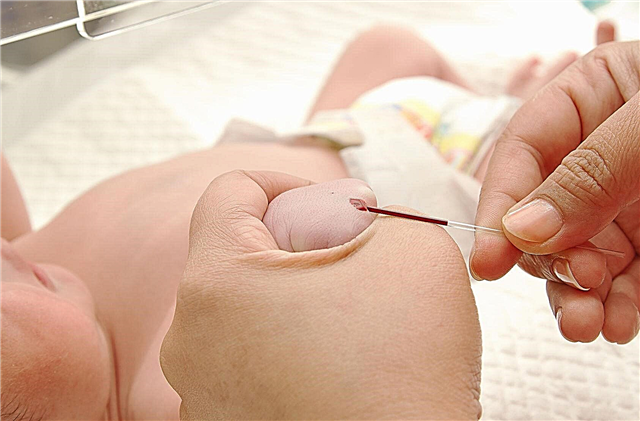
While actively developing in the womb, the baby changes greatly during its intrauterine development. The second trimester is characterized by continued fetal development. A child aged 17-18 weeks has characteristic features of his intrauterine development, by which it is possible to determine the degree of correctness of the formation of all organs.

Sense organs
Through nerve analyzers, the baby can learn about the outside world. For an independent life, the baby must have well developed hearing, vision, tactile and sensory sensations, as well as the ability to analyze various smells and tastes. By the 18th week of pregnancy, the child has very characteristic features in the work of the nerve analyzers, and therefore the first own feelings.
Babies at 18 weeks of gestation have the ability to distinguish between different shades of taste. This is largely due to the fact that the tongue already has special outgrowths - papillae. It is thanks to them that the child is able to distinguish between bitter, salty and sweet flavors. This recognition occurs when the amniotic fluid is swallowed. Experts note that the taste of this biological fluid is very diverse. In many ways, the taste of amniotic fluid depends on the products that a pregnant woman eats at this stage of pregnancy.
The ability to "distinguish" voices is another characteristic feature of this period of pregnancy. The development of the auditory analyzer helps the baby to recognize the voices of his parents. Babies are also able to hear music.


Some scientists believe that mother's voice has a very beneficial effect on the fetus. Such "conversations" with the mother, especially when she is in a good mood, help to calm the baby.
Doctors strongly recommend talking with the child - this contributes to the formation of a special psycho-emotional connection between the mother and the baby.
Some experts believe that at this time it is already possible to begin to form a child's musical taste. For this, a pregnant woman is advised to listen to pleasant music. Classical or instrumental music is a great choice.
The most important organ that coordinates the work of all internal organs in the body is the brain. Its intensive development leads to the fact that the child's behavior becomes more complex. So, the fetus develops the first reflexes, which are still exclusively unconditioned.
The child can already "build" grimaces, smile, tries to frown. The baby's physical activity also increases. Gemini can actively explore each other.

Circulation
Another vital organ is the heart. By week 18, it has already formed. The baby's heart is represented by 4 cameras, just like that of his dad or mom. The fetus is already showing cardiac activity, that is, the heart is beating actively.
An important indicator of the heartbeat is the heart rate. You can measure this indicator in different ways. At this time, the number of heartbeats (HR) is measured not only by performing an ultrasound scan, but also by listening to heart sounds with a special obstetric device - a stethoscope.
Each period of pregnancy has its own heart rate standards. Normal fetal heart rates at week 18 are 140-160 beats per minute. It is important to note that small deviations from these values are often encountered in medical practice. In some cases, this does not at all indicate the presence of any dangerous pathologies in the fetus. Doctors call a significant decrease in heart rate below normal as bradycardia. A too fast heartbeat is called tachycardia and is also an unfavorable condition.


To assess the work of the heart, experts necessarily assess the heart rate in dynamics. If the fetal heart rate deviates significantly from the norm, this may be a sign of the development of hypoxic manifestations in him.
Fetal hypoxia or oxygen starvation of internal organs is an extremely unfavorable condition that requires urgent medical measures to eliminate it.
The fetus also actively develops the vascular network. The vascular mesh is clearly visible through the thin and still rather transparent skin of the fetus. The diameter of the arteries and veins is still quite small.
External integuments of the baby
By the 18th week of pregnancy, the thickness of the baby's skin changes, it no longer looks as transparent as before. Outside, the baby's skin is covered with a special lubricant. It has a protective function and protects the baby from the adverse effects of the external environment.
Sweat and sebaceous glands are actively involved in the formation of this special original lubricant. It is they who form a secret that mixes on the surface of the skin with exfoliated skin scales, forming a lubricant.

Under the baby's skin, the subcutaneous fat increases daily. This process is extremely important preparation before the upcoming birth of a baby. A sufficient amount of subcutaneous fat is required so that the child simply does not overcool after changing his habitat. Fat stores in the body perform a very important thermoregulatory function.
Secretory glands
By the 18th week of pregnancy, various hormones of its own appear in the bloodstream of the fetus. This is due to the fact that some secretory organs have already begun to function. So, the pituitary gland is already formed in the child. Under the direct influence of the thyroid gland, specific hormonal substances are formed.
The formed sex glands also begin to form hormones. So, in boys, the concentration of testosterone begins to increase in the blood. Under its influence, further development of the internal genital organs occurs. At this stage of pregnancy, parents-to-be can already find out the gender of their baby.

Digestion
The liver of the fetus begins to form bile, which enters the intestines. In the future, bile is necessary for the formation of original feces. A full-fledged digestion process will begin in a child much later - at the first feeding, but now this process is more of a developmental nature and is necessary for the full development of the digestive system.
At the 18th week of pregnancy, the fetus is already carrying out intestinal peristalsis. Peristaltic movements occur with successive contraction of the intestinal wall. This process is extremely important as it is necessary for proper digestion.
On the inner wall of the intestine, special microscopic outgrowths - villi have already appeared. Under their influence, the absorption process is actively taking place. Through the intestinal villi system, nutrients can enter the bloodstream and be carried to all internal organs.

Bones and muscles
The structure of the musculoskeletal system of the fetus at this stage of pregnancy is already quite complex. So, the lower limbs of the child become longer than the upper ones. This leads to a change in body proportions. The kid gets more and more "human" look every day.
The density of small bones also changes. They are becoming less and less fragile. Calcium is very important for maintaining normal bone density. To meet the increased need for calcium, the expectant mother should eat more foods that contain it in their composition. Fresh dairy products are an excellent choice.
The intensive development of muscles contributes to the fact that the baby's first movements are actively manifested. If the baby is already large enough, then his mother can even feel the "movements" of her child in her stomach. Many women note that they first noticed the first sensations of stirring their babies at 18-22 weeks of pregnancy.

Respiratory system
The lung tissue is still developing. Finally, the lungs will form a little later. Also, only after a few more weeks a special substance will appear in them - a surfactant. It is necessary so that the lungs can fully expand during the baby's first breath.
Body parameters
Doctors can assess how the baby is growing using various clinical parameters. You can make such an assessment using the weight and height of the baby. You can measure the size of the child, as well as find out how much he weighs, using an ultrasound scan. There are certain norms for each gestational age.


Normal values of some ultrasound criteria for a fetus at 18 weeks of gestation are shown in the table below.
Location
It is possible to determine in which anatomical zone of the uterus the fetus is located by means of an ultrasound examination. With the help of ultrasound, it is possible to determine the breech presentation of the fetus, when the baby is located with its pelvic end to the entrance to the small pelvis of his mother. This arrangement is physiologically disadvantageous. With breech presentation, doctors carefully monitor the development of pregnancy and choose, as a rule, a cesarean section for obstetrics.

It should be remembered that the position of the fetus in the uterus at 18 weeks is not yet final. So, very active and mobile children before their birth can change their location more than once. Therefore, doctors determine the position of the fetus repeatedly during pregnancy.
The appearance of the child
The face of the child during this period of his intrauterine life changes somewhat. So, the baby already looks almost like a real little man, and not an alien, but with small features.
The eyes of the fetus appear to be quite large. Outside, they are closed by the eyelids. During the ultrasound, it seems that the child is asleep, but this may not be the case at all.
The proportions of the face change every day. The contours of the nose and chin become clearer and smoother. The baby's ears are already formed, but so far they are located quite close to the neck.

There are small hairs on the head and torso of the child. There are also short eyelashes and eyebrows.
The child is able to open and close his mouth. The first unconscious emotions of the baby are usually visible during an ultrasound scan, unless, of course, the baby turns away from the ultrasound sensor during the examination. The overall body proportions of the fetus also change. His body is stretched, and his head no longer seems huge. Small fingers already have nails, and even a unique skin pattern. The thumbs are usually longer than the rest of the fingers and toes.
For how the fetus develops at 18 weeks of gestation, see the next video.



